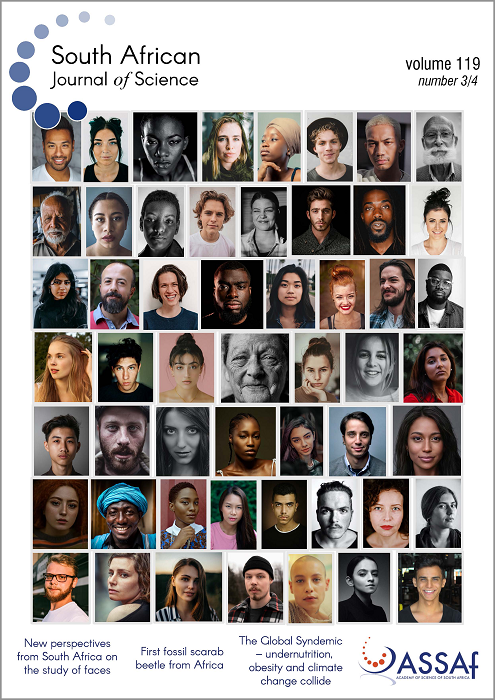The impacts of artificial light at night in Africa: Prospects for a research agenda
DOI:
https://doi.org/10.17159/sajs.2023/13988Keywords:
ALAN, biodiversity conservation, light pollution, nocturnal ecology, sustainable developmentAbstract
Artificial light at night (ALAN) has increasingly been recognised as one of the world’s most pernicious global change drivers that can negatively impact both human and environmental health. However, when compared to work elsewhere, the dearth of research into the mapping, expansion trajectories and consequences of ALAN in Africa is a surprising oversight by its research community. Here, we outline the scope of ALAN research and elucidate key areas in which the African research community could usefully accelerate work in this field. These areas particularly relate to how African conditions present underappreciated caveats to the quantification of ALAN, that the continent experiences unique challenges associated with ALAN, and that these also pose scientific opportunities to understanding its health and environmental impacts. As Africa is still relatively free from the high levels of ALAN found elsewhere, exciting possibilities exist to shape the continent’s developmental trajectories to mitigate ALAN impacts and help ensure the prosperity of its people and environment.
Significance:
We show that the African research community can usefully accelerate work into understudied aspects of ALAN, which demonstrably impacts human and environmental health. Africa presents a unique, and in places challenging, research environment to advance understanding of this global change driver.
Published
Issue
Section
License

All articles are published under a Creative Commons Attribution 4.0 International Licence
Copyright is retained by the authors. Readers are welcome to reproduce, share and adapt the content without permission provided the source is attributed.
Disclaimer: The publisher and editors accept no responsibility for statements made by the authors
How to Cite
- Abstract 790
- PDF 1194
- EPUB 452
- XML 203













.png)